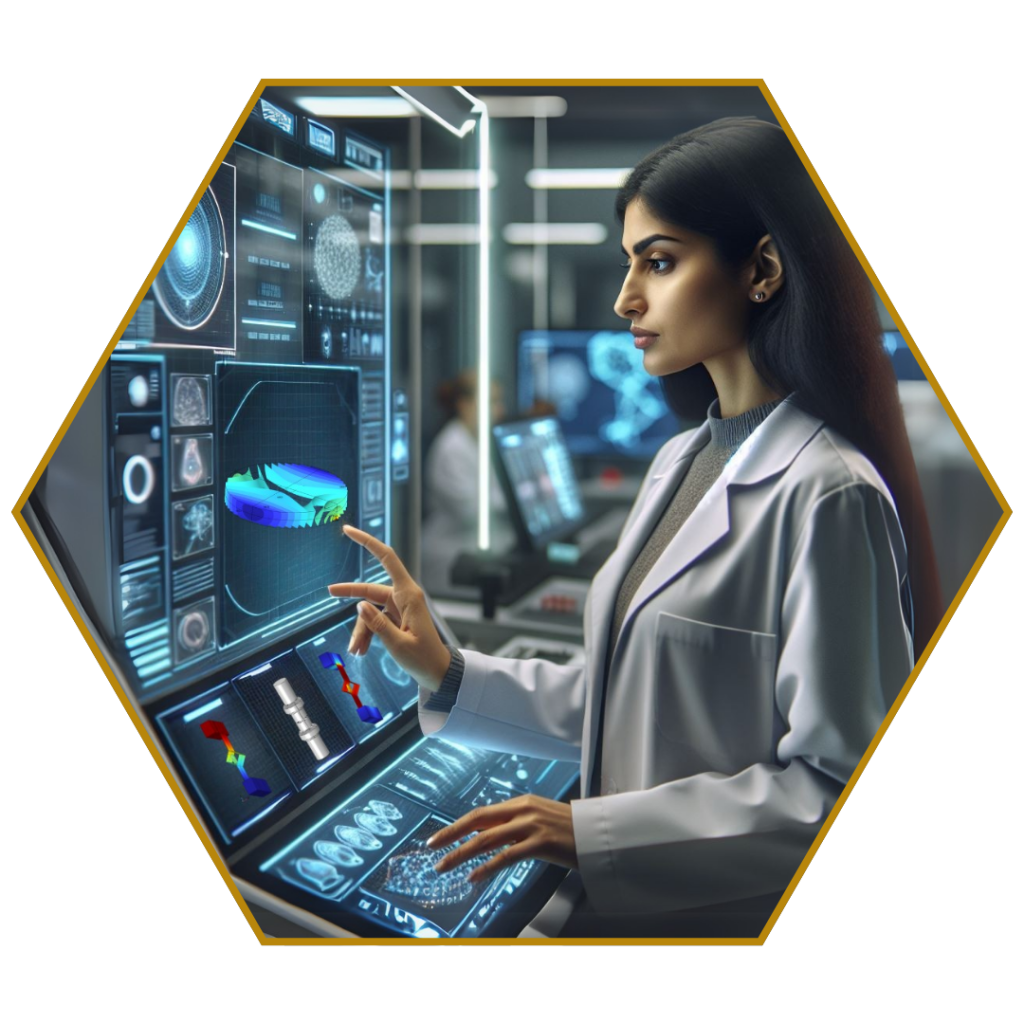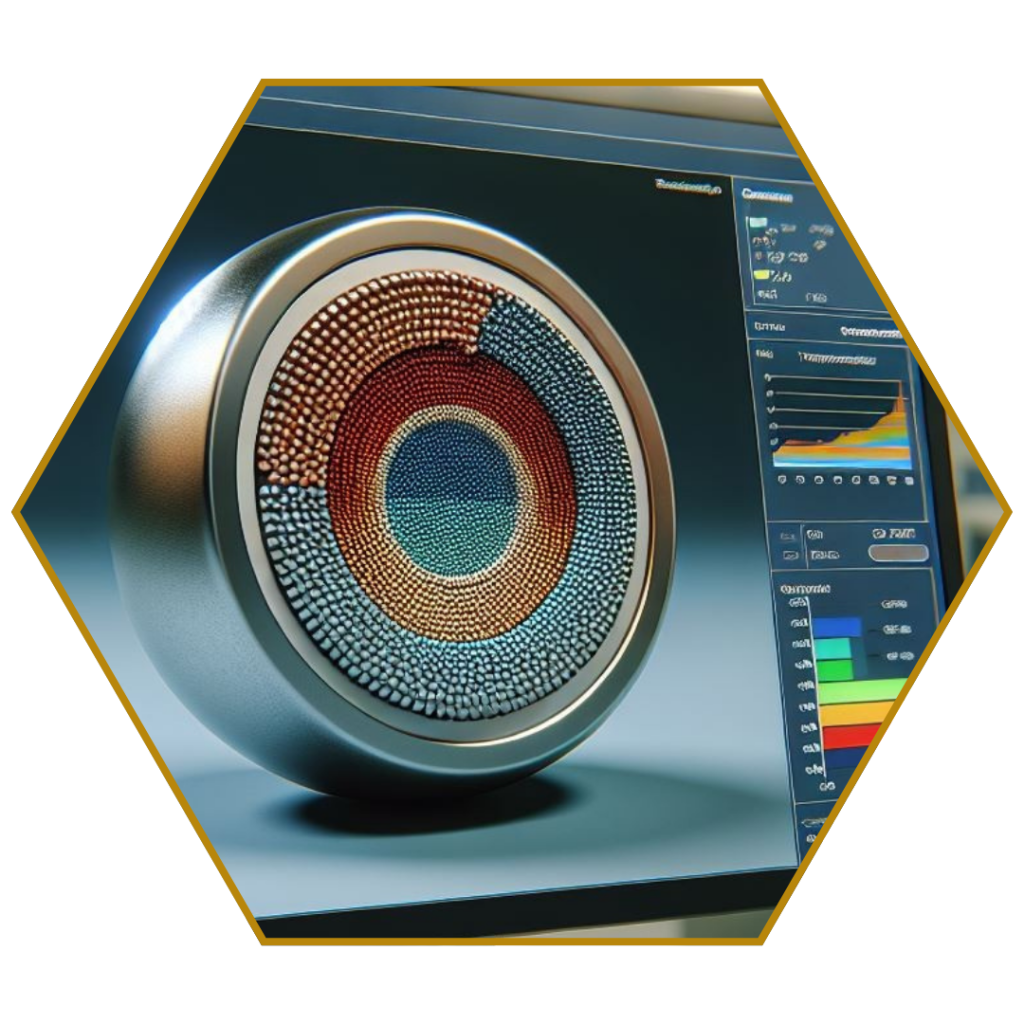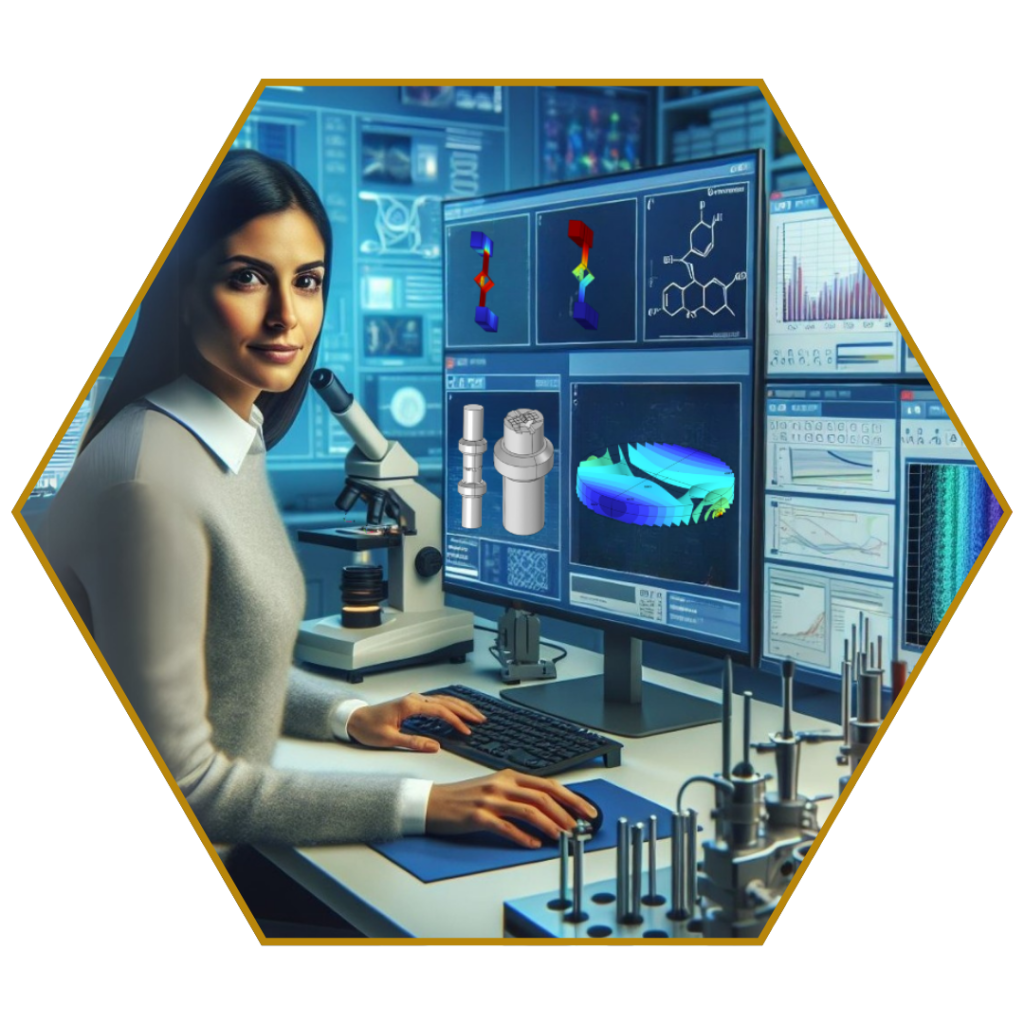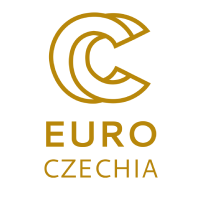Partner: Institute of plasma physics of the Czech Academy of Science
Field: material development
How to understand what is going on beneath the surface when we cannot take a closer look inside?
Imagine you are working on developing revolutionary materials, but you only have fragments of data, such as surface temperatures and visual records of changes. In addition, you are supposed to obtain this information from practical experiments and visual observations and perform the analysis manually.
This was the situation faced by an experimental researcher from Institute of plasma physics of the Czech Academy of Science, who is involved in novel materials design using the “sintering” method. Although she was able to measure the temperature at the pellets’ surface, the processes inside remained a mystery.

What actually happens inside the pellet when heating it in a vacuum? How does the temperature change at different points in the pellet, and how does this temperature gradient affect the quality of the material? Without these answers, more accurate research would be limited.

Supercomputers and numerical modelling can make a difference
To take her experimental work to the next level, the researcher teamed up with the National Centre of Competence in HPC (NCC).
“First, we discussed together the possibilities of using digital image processing to automate the visual evaluation of temperature changes and significantly save time during data analysis,” explained Tomáš Karásek, head of the NCC. Moreover, numerical modelling was successfully proposed to obtain the missing data.
Together with experts from IT4Innovations National Supercomputing Center, together with experts from the IT4Innovations national supercomputing centre, we created a model based on physical quantities and simulations that can estimate the thermal distribution inside the pellet – not only on its surface.
Using a supercomputer, we simulated heat transfer during heating, which provided a detailed view of the temperature gradients. This process can be compared to meat grilling. While the surface heats up quickly, the heat reaches the centre gradually. Similarly, we were able to show exactly how the temperature propagates inside the pellet.
Result: Faster and more accurate design of novel materials
The collaboration has shown how crucial the link between experiment and simulation is. Numerical modelling not only made the analysis of thermal processes more accurate but also revealed phenomena that would otherwise have been invisible. The researcher now has the tools to streamline the novel materials design while gaining a competitive advantage in her field of study.

When the experiment meets computing power
This success story demonstrates the capabilities of supercomputers to bridge the gap between theory and practice. Numerical modelling gives a clearer picture of processes otherwise hidden beneath the surface. Regardless of what innovative project you are pursuing, modern HPC technologies can be your key ally on the road to success.
Wondering how HPC can advance your research, too? Contact us to find out what we can do for you.
Read about more successful collaborations
Don’t miss any news. Follow NCC Czechia on social media.




